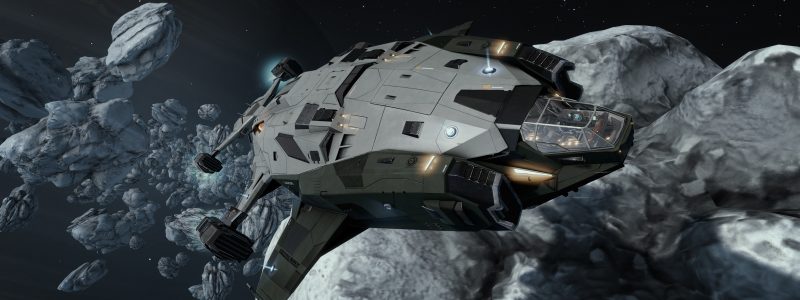I posted this a longish time ago on another one of my old accounts but a couple days after I edited it to make it easier to understand. I also just added quite a bit more info.
So most of you probably know what O, B, A, F, G, K, M, L, T, Y, Proto, Carbon, Wolf-Rayet, White Dwarf, and non sequence means and if you don’t then you will likely catch on pretty quickly. But I am focusing on the numbers and roman numerals that you see right after the standard OBA etc that you can’t as easily figure out on your own.
Elite dangerous uses a real life system that I forget the name of because I researched all of this years ago but the point is this is all real life.
So when looking at the classification of star in the galaxy map, you will see something to the affect of “A6 V”. All stars will follow this pattern which is first the type of star (A), a number (6), and then a Roman numeral (V).
Just as another example, the sun’s classification is a “G2 V“. Again first you have the star type (G), a number (2), and then a Roman numeral (V).
So we all know that the first letter is of course the star type which in the suns case is a G type. You won’t get far as an explorer without knowing generally what this means in terms of fuel scooping and likely hood of finding valuable planets. So assuming we all understand this already, I will move on.
Now we will get into the information that not quite as many people know. But I promise it is quite simple. The first number is the temperature of the star, with 9 being the coolest, and 0 being the hottest. So if we go back to our two example stars, (A6 V, G2 V) we know that the A type is a little bit on the cooler side compared to other A types, while the G type (our sun) is quite hot compared to other G types.
Possibly as a side affect of the temperatures, a F9 V will be bigger than an F0 V because APPARENTLY the hotter stars are smaller than the cooler stars according to what another CMDR told me although that doesn’t particularly make sense to me but then again science doesn’t have to make sense to me.
So as explorers, how can we use this information to our benefit? Well, back in the good old days before the FSS which is when I first wrote this guide, we could use this temperature value to decide which planets maybe terraformable and thus decide which planets to spend minutes flying to. But now with the FSS we can figure that out in seconds. So knowing the temperature of a star is just kind of interesting now.
Now moving onto the Roman numeral which comes right after the number. So in both of our example stars (A6 V, G2 V), the Roman numeral is V. The Roman numerals can be I, II, III, IV, V, VI, and VII. I will try to simply explain what each of these mean and occasionally add some useful information.
VII means that the star is a white dwarf.
VI means that the star is a subdwarf. These are kinda similar to IV stars because I see no difference between VI stars and regular V stars which I’m about to get to.
V is the most common roman numeral that you will see because it just says that the star is a regular main-sequence star. These make up pretty much all of the stars in the galaxy and you are most likely to find valuable data in these stars. You will want to spend most of your time in these star systems but if you want to be adventurous and make noteworthy discoveries, go ahead and spend some time visiting I, II, III, and VII stars.
IV means that the star is a sub giant, most sub giants are A and B type stars from what i have seen. After comparing the mass and size of a B type sub giant to regular B type stars I didn't see much of a difference but go ahead and google them if you wanna find out more about them.
III means that it's a giant. From what I have seen these are mostly M types (probably just because that is the most common star type), but they can be B, A, F ,G, K, and of course M stars. There is an abundance of these in the core so I suggest looking by and in the core for them. In my experience, if you go to the edge of the core and maybe 1000 light years down, you can find huge clusters of giants, S type giants, white dwarfs, and black holes. You can spend days in these clusters and not run out of cool stars to explore. I will say somewhere near colonia maybe 1000 light years down in one of these clusters lies an S type giant with an ELW that I found but never cashed in because I deleted that save.
II stars are bright giants……
I stars are supergiant stars (a nice and close one is Antares), these can be split up into 3 groups.
The first one are Ib (example: A2 Ib) stars, these are less luminous super giants.
Iab stars are intermediate supergiants.
Ia means it's a luminous supergiant.
And then there are actually 0 stars or “la+” stars which are hypergiants. “0”/ “la+” are what they are called in real life, but elite dangerous calls them “La0” stars. I’m going off what one CMDR told me about these stars because I have never seen one in Elite Dangerous. This maybe because all this time I was looking for “la+” and not “la0” lol. These tend to be A, B, and O type stars. Ridiculously large but unfortunately they tend to not have any planets.
So looking at the sun’s classification which is G2 V, we can tell that it is a relatively hot (for it’s class), main sequence star.
Hopefully that wasn’t super confusing lol.
Source: https://www.reddit.com/r/EliteDangerous/comments/odnee8/explorers_guide_to_star_classification/







